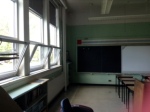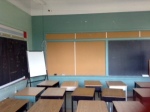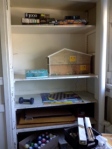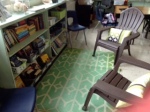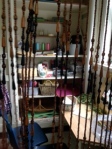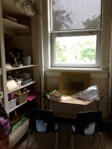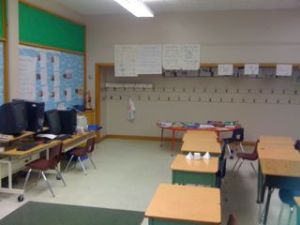I have been reviewing photos from Kindergarten classes from a few years ago. When I took the photos, I may have been capturing a writing activity in action to post for parental viewing on the class website. Now, as I reflect on some of the photos, I notice how the photos demonstrate the pedagogy of a student-centered, inquiry-based program that allows the child to be and feel capable at any entry point in the activity.
Look at the two photos below. They show an activity that emerged after I read the book, The Hello, Goodbye Window by Norton Juster. Students were interested in discussing the family and their own, so they were encouraged to bring in a photo or make a drawing of their own family. We spread out large banners of paper and the children found a space to paste their picture. Then they labelled their picture. This was one of the first collaborative writing activities of the year in September to October. Some students were already avid writers, using the writing centre daily. But this activity evolved from the shared experience of reading, and even the reluctant writers were interested in writing about a topic they were confident about – their family.
Some of the students added details and names, while others used only initials for representation (M for mom, S for sister). The writing was open for students to access at their level – they were not given names to copy or told how to spell the names. The result was a collaborative piece that framed our classroom, providing an assessment as and for learning that we could refer to over the following few weeks.
Looking at the photos, I also notice how this emergent literacy activity connected with other areas such as drama and art. Students would be playing family in the drama centre, then go to confer about their own family roles. Even the opportunity it provided for students to discuss a topic that they felt confident about, while noticing the similarities and differences they shared with peers, supported oral language development.
Although it can be challenging with students doing different things at different times, allowing the time and space for emerging literacy is necessary for today’s learners. I doubt you will see the same degree of initiative, conferring, and engagement when students are sitting in more controlled environments working at tables on individual fill-in-the-blank family trees. By giving them the opportunity, children learn from one another and feel capable to represent their knowing in a variety of ways and at different entry points.


